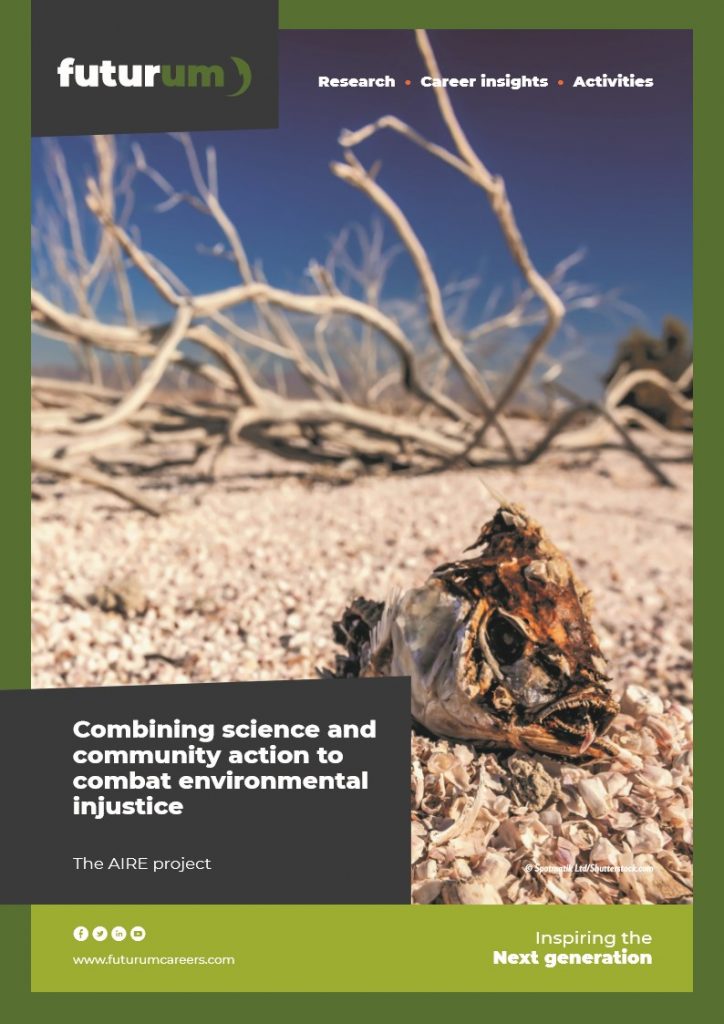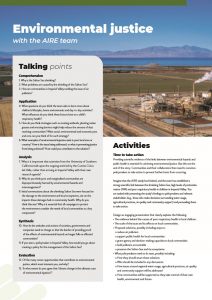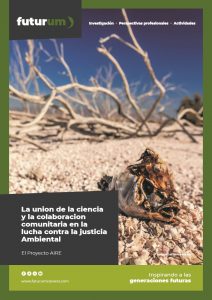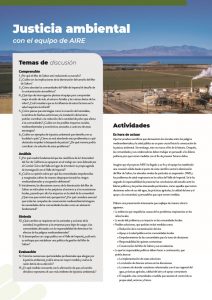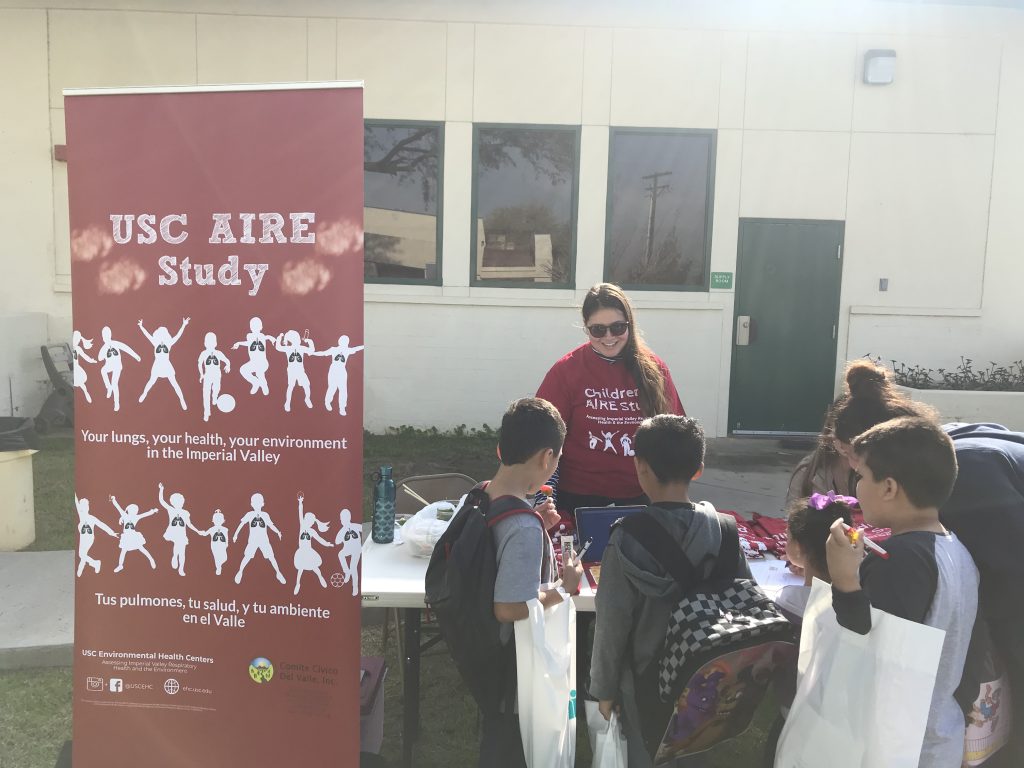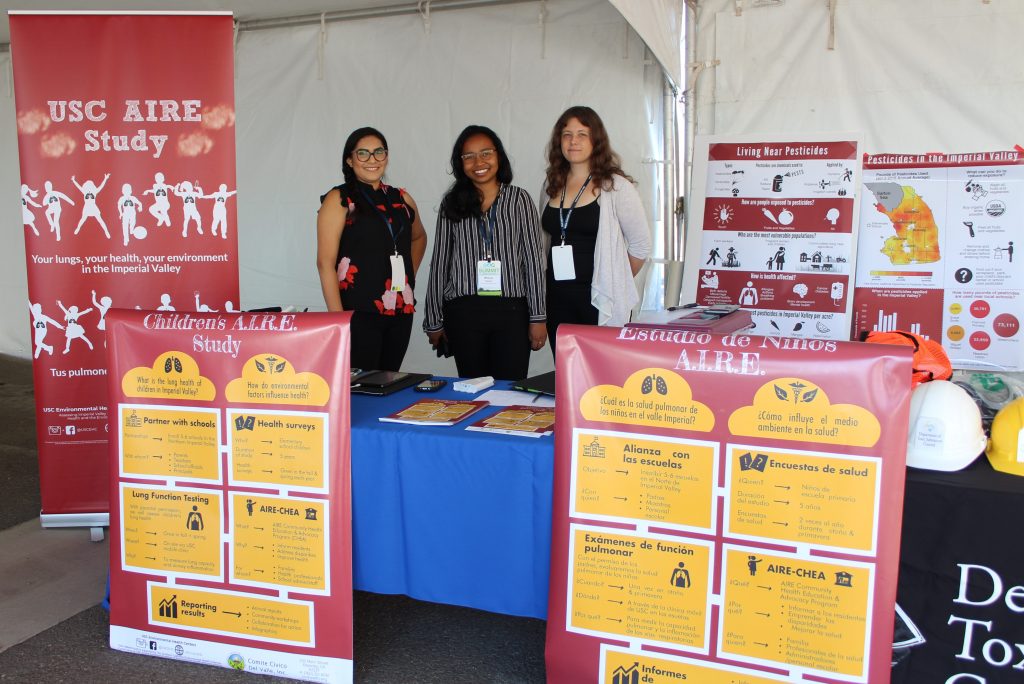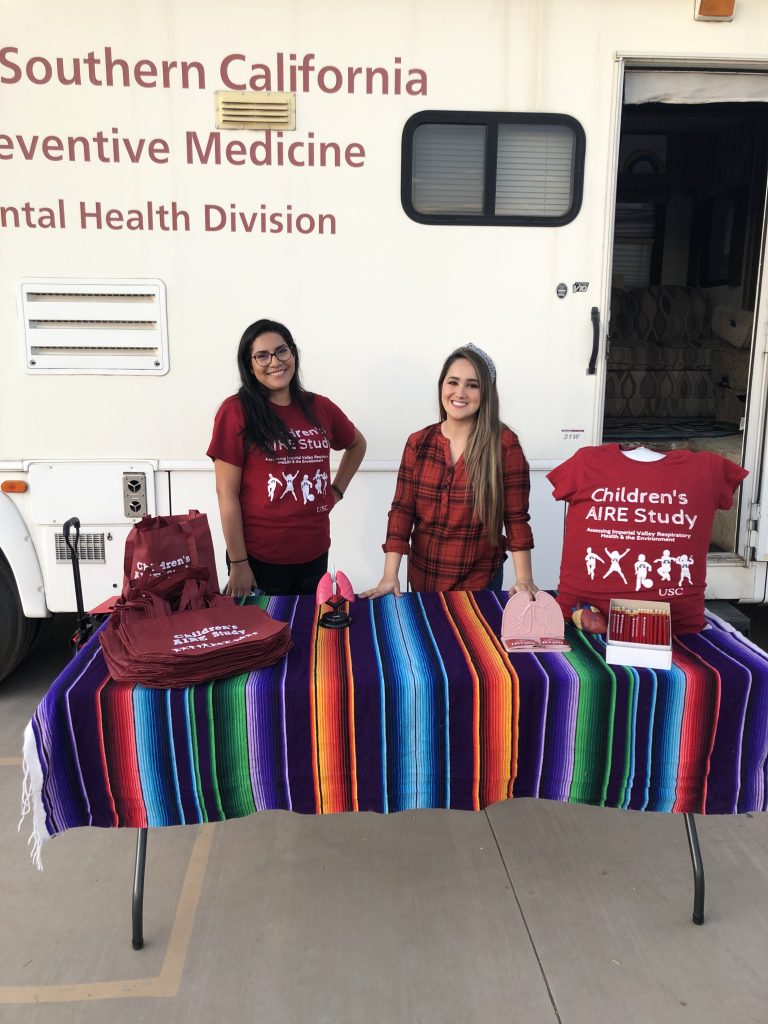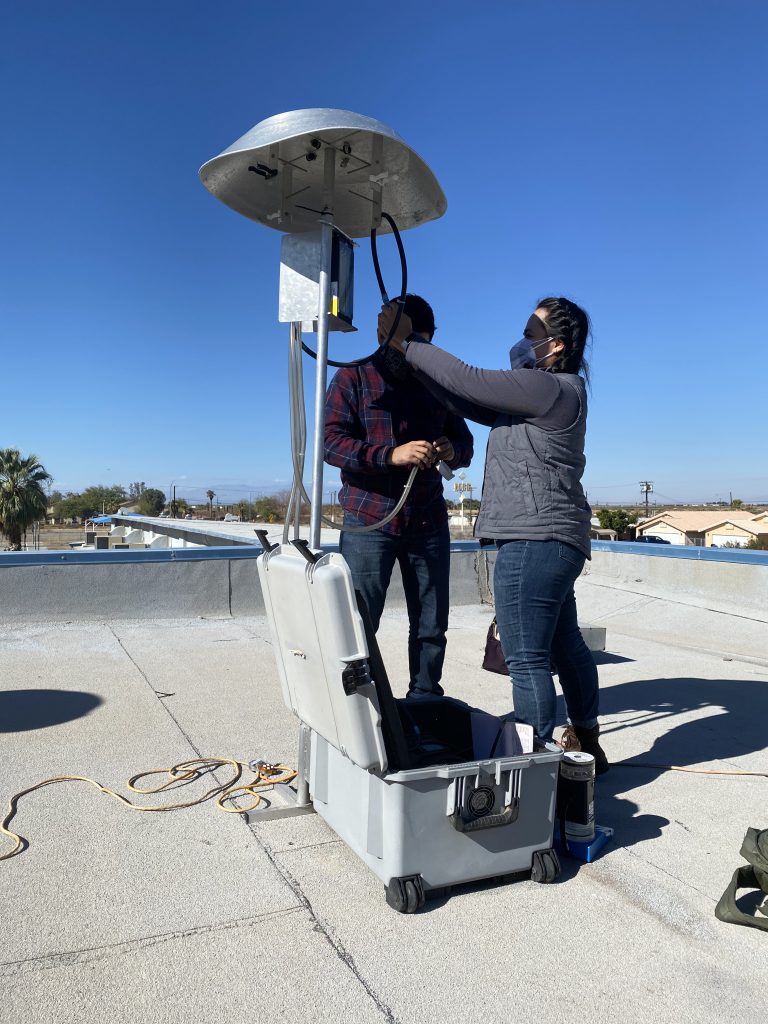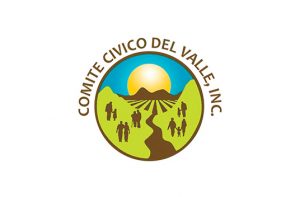Combining science and community action to combat environmental injustice
The Salton Sea, a polluted lake in southern California, USA, is rapidly drying up as a result of changes in climate and water usage. As the muddy lakebed becomes exposed, toxic dust is blown into surrounding communities, where residents have high rates of asthma. Scientists from the University of Southern California are working with community partners at Comite Civico del Valle to investigate how this air pollution is impacting children’s respiratory health and to empower affected communities to advocate for change and fight for environmental justice.
Talk like an environmental justice researcher
Agricultural run-off — water that drains off agricultural land
Asthma — a respiratory disease that causes breathing difficulties
Environmental justice — the right for all people to have access to a healthy environment
Heavy metals — high-density metallic elements that are commonly toxic
Particulate matter (PM) — tiny particles in the air (such as dust) that are harmful to human health
Playa dust — particulate matter formed when a muddy playa (beach) dries out
Respiratory — related to breathing and the breathing system (lungs and airways)
Environmental mismanagement disproportionately affects poor and marginalised communities. Finding solutions to such problems and achieving justice for communities can be challenging, highlighting the need for collaborations between community advocacy efforts and scientific research.
The Assessing Imperial Valley Respiratory Health and the Environment (AIRE) study is a community-driven collaboration between the Comite Civico del Valle (CCV; which is a community organisation focused on environmental justice in Imperial Valley), local schools and scientists at the University of Southern California (USC). The study aims to determine the effects of the shrinking Salton Sea on children’s health.
The Salton Sea
The Salton Sea is located in the Imperial Valley of Southern California, a rural region containing predominantly Mexican-American communities facing high levels of poverty and unemployment. In 1905, a canal diverting water from the Colorado River failed, causing water to flow into the Salton Basin. This engineering failure led to the creation of the Salton Sea – a large, shallow lake in one of the hottest and driest parts of California. For decades, the lake was sustained by agricultural run-off from surrounding fields, with evaporation from the lake’s surface balanced by an input of water contaminated with pesticides, synthetic fertilisers and industrial chemicals.
However, in recent years, the lake has started to dry up. Reallocation of water resources means less run-off is entering the lake, and a hotter climate is increasing evaporation. As the Salton Sea shrinks, the lakebed is becoming exposed, forming wide beaches (playas) of mud contaminated by heavy metals and toxic chemicals. As the exposed mud dries in the hot sun, it turns to dust. This toxic playa dust is now blowing into surrounding communities and being breathed in by residents. The case of the Salton Sea is a prime example of how poor land use decisions (in this case, mismanagement of water resources and agricultural pollution) can damage the health of entire communities.
Health impacts of the shrinking Salton Sea
“Around the Salton Sea, one in every five residents has asthma,” says Luis Olmedo, Executive Director of CCV. “Children in Imperial Valley suffer from some of the highest rates of asthma in the country, which is a significant concern for communities.” As Dr Shohreh Farzan, an environmental epidemiologist at USC, explains, “Children are particularly susceptible to the impacts of air pollution as their lungs and immune systems are still developing.”
The AIRE study is monitoring the health of 700 children in the region and linking these data to local measurements of air quality to examine correlations. As a collaboration between scientists, community partners and local families, the project’s aim is to scientifically evaluate whether the increase in air pollution caused by the shrinking Salton Sea is contributing to the high levels of respiratory diseases affecting communities.
A community approach to air quality monitoring
“CCV has a community air monitoring network that measures levels of particulate matter (PM) at over 25 schools across Imperial Valley,” explains Christian Torres, one of the project’s air monitoring technicians. These monitors provide near-real-time measurements of air quality at the neighbourhood level, alerting residents to increases in air pollution and allowing them to react accordingly. For example, CCV and local schools established an innovative scheme in which schools use the monitoring network to determine the air quality each day, then they communicate this to the neighbourhood by raising a colour-coded flag. A green flag indicates good air quality, while orange and red flags indicate more hazardous levels. Schools and families can then use this information to make informed decisions, such as when to allow children to play outdoors. The AIRE study makes use of CCV’s air quality monitoring network to scientifically investigate local sources of air pollution and community exposure to this pollution.
The importance of community engagement
“Our research is built upon the ongoing work around air quality and asthma led by CCV in schools and the wider community,” says Dr Jill Johnston, an environmental justice researcher at USC. CCV had been raising awareness of air pollution and helping families manage their children’s asthma long before Jill and Shohreh arrived. Community-driven research must begin with the needs of the community, and working with established community partners is essential for a project’s success. “We have partnered with CCV from the very beginning of the AIRE study and this partnership has been foundational to the entire project,” says Shohreh. “CCV, school officials, parents and community members have shaped the questions that led to this work.”
A scientific approach to air pollution analysis
In addition to analysing data provided by CCV’s real-time air quality monitoring network, the AIRE team is also collecting PM samples for analysis. “Our set-up consists of a large pump that pulls air through a filter to collect any airborne particles,” explains Edgar Ruiz, an air monitoring technician at CCV. “These PM samples are analysed in the lab to determine their size and composition, which gives an indication of their source.” Air pollution in Imperial Valley comes from several sources in addition to dust from the Salton Sea, including the burning of organic matter and diesel exhaust fumes. By combining all these data on air quality, the team can build a high-resolution picture of the amount and type of air pollution experienced by different neighbourhoods.
Investigating respiratory health
The other key information for the investigation consists of data on children’s respiratory health. Since 2017, the AIRE team has partnered with schools in Imperial Valley to enrol children in the study. “We send questionnaires to the children’s families asking about each child’s respiratory health history since birth, including any medication use, hospitalisations and diagnosis of asthma,” says Esther Bejarano, a community health worker at CCV. “We also ask about the child’s lifestyle, home environment and day-to-day activities.”
Each child then completes a lung function test, which provides information about their lung size and capacity. “This helps us learn more about each child’s lung health, which we can link to air pollution information,” explains Dayane Duenas Barahona, the AIRE research coordinator. “In addition, we collect data on where each child currently lives and has lived in the past which, when combined with the air quality data, allows us to understand how much PM each child has been exposed to throughout their life.”
Working together to find solutions
Reference
https://doi.org/10.33424/FUTURUM447
By examining the links between children’s respiratory health, local air quality and the shrinking Salton Sea, the AIRE study is providing communities with the scientific evidence needed to understand and address the challenges they are facing. “Our research is ongoing, but it is clear that as air quality worsens, children experience poorer respiratory health, with symptoms such as wheezing and coughing,” says Shohreh. The team has also observed that children living closest to the Salton Sea suffer the greatest impacts.
Residents of Imperial Valley are understandably desperate for solutions to this ongoing environmental health crisis. “Such strategies could include limiting the amount of dust that is blown into communities by creating wetlands around the lakeshore and planting native grasses to stabilise the exposed lakebed, or erecting barriers to prevent dust from blowing,” suggests Jill. “Air quality could be improved by reducing PM emissions from other sources, such as by limiting the use of diesel machinery and preventing agricultural burning.”
To fight environmental injustices such as the Salton Sea crisis, affected communities must have a say in the decision-making process. It is vital that residents of Imperial Valley can participate in conversations about how to address these challenges, and the AIRE study is helping them to do so.
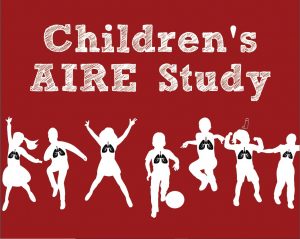 Assessing Imperial Valley Respiratory Health and the Environment (AIRE)
Assessing Imperial Valley Respiratory Health and the Environment (AIRE)
Fields of research: Environmental justice, environmental epidemiology
Research project: A community-driven research project to assess the impact of air pollutants on children’s respiratory health around the Salton Sea
Funder: US National Institutes of Health (NIH); grant number NIEHS R01 ES029598
About environmental justice
Environmental justice is a social movement to address the fact that poor and marginalised communities are disproportionately harmed by environmental hazards. “The idea of environmental justice means that everyone has the right to live, work and play in communities that are safe, healthy and free of dangerous conditions,” says Luis. “The reality is that poorer people, Indigenous people and people of colour bear greater environmental burdens, such as poor air and water quality.” These communities can lack the resources to combat the issues they face, such as stopping the source of pollution or taking the perpetrators to court, and so they are especially vulnerable.
The environmental justice movement gives power and agency to the communities affected by unjust environmental practices. “Environmental justice becomes possible when all communities have access to the information they need and can act as decision-makers to take action and create positive change for themselves,” explains Dayane. Engaging with local communities and supporting them to make their own decisions is, therefore, essential for effective environmental justice work.
“When facing environmental hazards, community organisations often gather their own data in the face of government inaction or industrial denial about hazardous exposure,” explains Jill. Placing this burden on communities is not fair but is usually what occurs. It should be the responsibility of those creating pollutants or damaging the environment to ensure their actions do not adversely affect others. Unfortunately, this rarely happens. “The burden of providing scientific proof that environmental harm is occurring falls on affected communities,” says Shohreh. “Collaboration with scientists, such as through the AIRE project, can help increase environmental health literacy, raise awareness, inform policy makers and contribute to decisions that improve public health. Working to address the unequal distribution of environmental burdens is critical to fostering a healthier, more sustainable future.”
Pathway from school to environmental justice
• At school and post-16, STEM subjects (including chemistry, physics, biology, physical geography, environmental science and mathematics) will teach you the scientific foundations that will be useful for promoting environmental justice. Social science and humanities subjects (including human geography, psychology, history and languages) will help you understand and communicate with communities impacted by environmental issues.
• Many university degrees can be applied to environmental justice. With a degree in public health, you will understand how public policies impact communities’ health. Chemistry will help you understand the reactions of polluting chemicals, while biology will teach you about the effects of these pollutants on the body. With a degree in engineering, you could develop infrastructure to eliminate toxic chemicals, while a law degree will enable you to provide affected communities with legal support. Biostatistics will teach you how to analyse data, and geography will teach you how to document communities’ stories and map environmental hazards.
• Whatever you choose to study, Jill recommends taking courses that specifically focus on the foundations and history of the environmental justice movement.
Explore careers in environmental justice
• If you are passionate about improving the well-being of communities, there is a wealth of career opportunities related to environmental justice. These include careers in public health (to improve the health of communities disproportionately affected by environmental issues), policy making (to ensure policies address the needs of communities and the environment), urban planning (to design communities that work with the environment), law and advocacy (to fight for communities impacted by environmental mismanagement), environmental education (to raise awareness of environmental concerns within communities) and research (to scientifically study the environmental hazards that are harming communities).
• Anyone of any age can get involved in the fight for environmental justice for all. Find a local, national or global organisation that promotes community and environmental health and well-being, and join their campaign to support their cause.
Meet the team
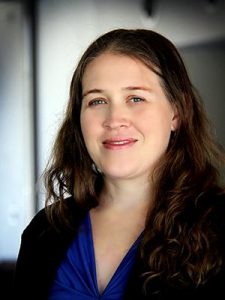
Dr Jill Johnston
Keck School of Medicine, University of Southern California
Environmental justice is a social movement that works to create healthier places where we live, work and play. To transform the systems that have harmed communities for generations requires building power within communities. I used to work as a community organiser with an environmental and economic justice organisation, and this experience highlighted the need for community-based science.
I was motivated to develop a research project focused on children’s health after listening to the concerns of community members and leaders in Imperial Valley. Through the AIRE project, I hope we can collectively produce actionable information to address environmental pollution and public health challenges.
The conversations with our young participants have been a highlight of this project. They are curious, knowledgeable and excited to engage in science. My advice for young people is to think about how you can use science to develop solutions that benefit communities and support environmental justice.
Studying environmental sciences and engineering helped me develop the skills needed to measure pollutants in the environment and understand how chemicals travel through the environment. I then studied epidemiology, which examines patterns of health in communities. When combined, this background provides me with the scientific foundation to help design research projects that address community health concerns.
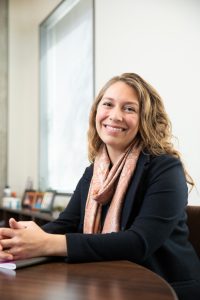
Dr Shohreh Farzan
Keck School of Medicine, University of Southern California
When I moved to California, I didn’t know much about the Salton Sea. After visiting the area and listening to the concerns of the community, it became clear that many people were worried about how the shrinking lake would affect their health. Parents often spoke about how many children in the communities suffered from asthma and other respiratory issues. However, they felt that most conversations about the impacts of the drying lake were focused on the health of the ecosystem rather than the health of communities. This inspired the AIRE project, which aims to understand respiratory health in Imperial Valley and shift the conversation to one about public health.
This project was one of my first opportunities to conduct community-engaged research. It’s been highly rewarding to conduct research that is aligned with the needs and concerns of community members. It is also rewarding to help inform the next steps needed to protect children’s health.
My PhD research was in pharmacology and toxicology. I spent most of my days in the lab, working with cultured cells and fruit flies. While I really enjoyed being able to answer clearly defined questions about protein interactions, I wanted my life’s work to have a broader public health impact, so I shifted my focus to environmental epidemiology. I still consider biological pathways, but now I study how they are disrupted by exposure to harmful substances, such as air pollution, and how this leads to disease, such as asthma.
As a young adult, I thought that science was all about lab work. I had no idea what environmental epidemiology was and could never have dreamt of doing what I am doing now. My advice to young people is to be open to opportunities that expose you to the huge range of scientific research. Reach out to people working on topics that interest you to see if you can get involved. I love it when students come to me because they are excited about my research.
There is an urgent need to create a fairer, healthier, more sustainable world for everyone. This should be regardless of someone’s background or where they live. Addressing environmental justice is not only about improving the environment and reducing pollutants, but also about promoting social equity and well-being. To me, these ideas are foundational for the creation of a more just society.
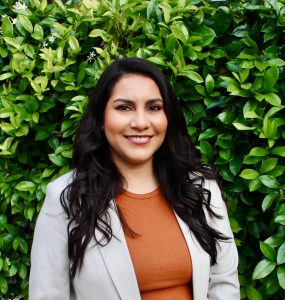
Dayane Duenas Barahona
Keck School of Medicine, University of Southern California
I am the research coordinator for the AIRE project, which involves everything from scheduling study visits at each school to ordering supplies. I help create the surveys, take measurements during data collection visits, and archive and share our results.
Previously, I was part of a research study investigating children’s exposure to their environment. I joined the AIRE project because it was a great opportunity to apply what I had learnt in a new setting, and I wanted to expand my knowledge of air pollution. I was excited to lead a project based in a rural community that I had not experienced before; it is rewarding to be part of the solution to the struggles faced by communities.
I love working with the children who are participating in our study. It has been great to watch them grow over the years and see their continued interest in the project. A highlight was their reaction to our mobile clinic at the start of the study – they thought it was the coolest thing!
I studied public health at university, which taught me about research studies, the ethical considerations of working with vulnerable populations (such as children), how to see the big picture in data, and how data can influence policies which can then lead to systemic changes. Most importantly, I learnt how to work in a team, which is a valuable skill for anyone involved in research.
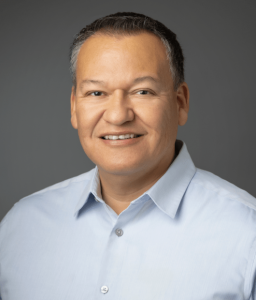
Luis Olmedo
Comite Civico del Valle
Communities in Imperial Valley suffer from some of the highest rates of asthma in the US. I joined the AIRE project to help our community find answers to critical questions around pollution and childhood asthma. I hope to produce interventions that can reduce asthma prevalence and influence policy changes related to the sources of pollution that lead to asthma.
As the executive director of CCV, I am a co-investigator for the AIRE project, and I advise the research team. It is important for CCV to partner with trusted scientists who have experience in community engagement and ethical research principles.
I have answered a call to service, driven by my quest for equity and justice. I believe we must pass down a better world than the one we inherited. The next generation needs to be given the draft ‘operational manuals’ so they can improve them for themselves and future generations.
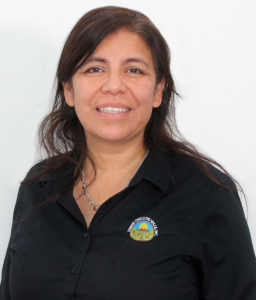
Esther Bejarano
Comite Civico del Valle
As the AIRE programme manager for CCV, I lead outreach and education efforts, assist with the coordination of events and develop relationships with local schools. I also provide feedback to the project team on the infographics and presentations we deliver to the communities.
I joined the AIRE project because I want to address the health needs of local communities. I enjoy fostering relationships with schools and families, finding ways to support them and working with them in different capacities to combat the challenges of poor air quality.
I am also a community health worker, where I work with families who are impacted in their daily lives by issues such as air quality and access to healthcare. Most of the families I work with are from underserved populations, so I am determined to find ways to help them prosper and become advocates for change, raising awareness in their own communities. This role has opened my eyes to the issues facing our community.
Being a community health worker requires passion. It is a very rewarding career where you can make a difference and see true change occurring.
I am passionate about environmental justice because we suffer from environmental injustice. The Salton Sea crisis is a personal issue for me as both my kids suffer from asthma. I became an asthma educator because I wanted to be informed and help others. This is my home, and I want the best for my children and my community.
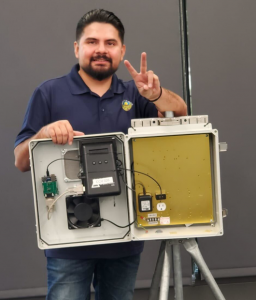
Edgar Ruiz
Comite Civico del Valle
I am an air monitoring technician for the CCV’s community air monitoring network. My responsibilities include maintaining the equipment and checking that everything is working properly. For the AIRE project, I am also in charge of receiving, preparing and installing the air filters at their respective sites.
It is very rewarding to participate in a research study that is generating understanding of the negative impacts of the air pollution we are exposed to. I also enjoy learning about new monitoring equipment and techniques, such as new methods for obtaining air samples. This has helped me gain practical experience and learn more about my work.
I studied energy engineering at university. While this was not focused on air monitoring, I learnt a lot that helps me in my role as a technician. I can follow established procedures, adapt to different work situations and solve problems that arise.
We should all have the same right to have access to a dignified and healthy environment where we can grow and perform at our best. There are many situations in which communities are at a disadvantage, and that is what motivates me in my work. I want to influence change and educate the next generation about improving air quality.

Christian Torres
Comite Civico del Valle
I’m passionate about environmental justice because I grew up in a community affected by environmental issues. I saw similar communities benefitting from environmental justice work, and it felt like an injustice not to bring such opportunities back home.
I studied biology at university, which gave me a basic understanding of the issues I now deal with, including public health, the environment and the effects of pollution on the body. It also gave me critical thinking skills, which help me now as I often need to think outside the box and have a ‘plan B’ ready.
I always dreamt of being a field scientist who was involved in community work for the public benefit. My current role, as an air monitoring technician for the CCV’s community air monitoring network, allows me to fulfil this goal as I collect air filters from schools that are used to assess air quality in local communities.
I enjoy working with the team on the AIRE project. I also enjoy applying what I learnt during my university studies to contribute to the research, and I like learning new things about monitoring equipment and the technical aspects of the project.
The AIRE team’s top tips
• Respect Mother Earth.
• Honour, respect and learn from elders and leaders in your community.
• If you want to help communities, it is important to listen to their needs, learn from what community members have to share and build trusting relationships with people.
• Don’t give up, even if what you are currently doing doesn’t seem to make sense. At some point in life, you will understand its importance.
• Work hard at what you do, but also remember to relax.
• Look for opportunities to get involved with research projects as this will give you practical experience and help you build connections for future work. Be open to different opportunities (such as collecting pollution samples in the field, analysing data in a lab, or working with community members in a clinic) as you never know what will pique your interest.
Do you have a question for the team?
Write it in the comments box below and the team will get back to you. (Remember, researchers are very busy people, so you may have to wait a few days.)

